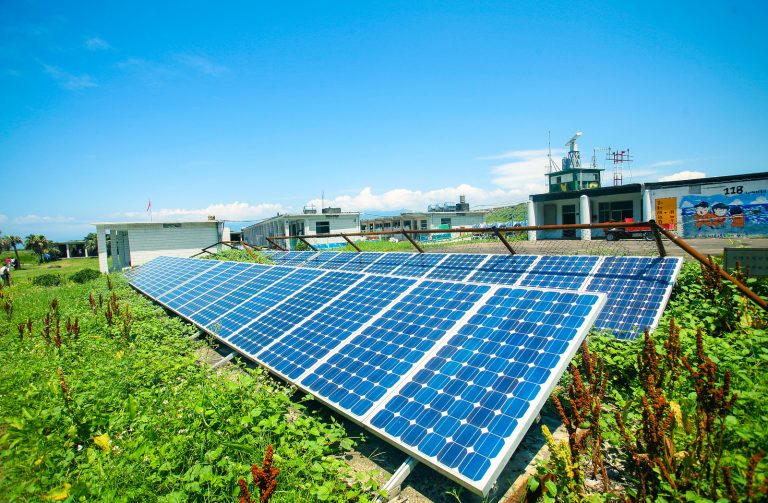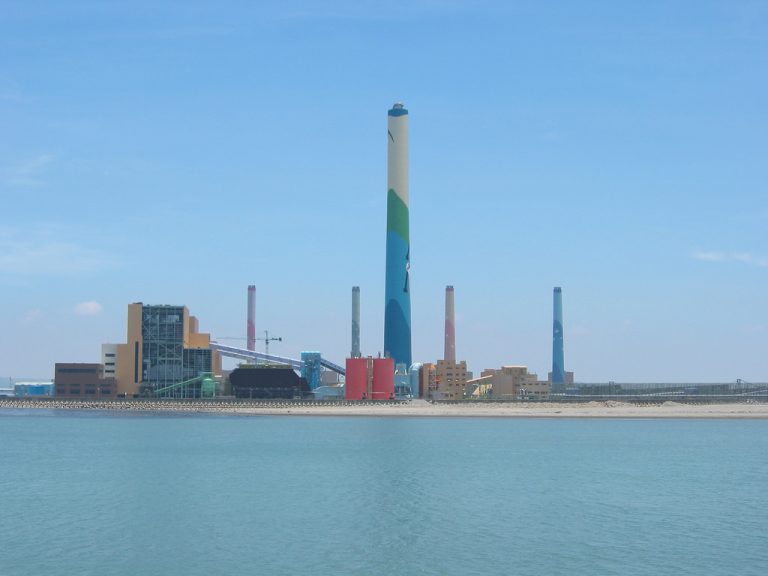
The progress of Taiwan’s energy efficiency is too conservative
Aside from the types and usage of energy, energy efficiency is an important variable to affecting the environment. Goal 7.3 sets out that by 2030, global energy efficiency will increase by a factor of 2, which can be examined in conjunction with SDG8’s indicators of sustainable economic growth. In other words, to become an efficient economy, the goal of energy efficiency policy should be more proactive.
Scholars used data from International Energy Agency to analyze 18 OECD’s 50 industrial sectors. The energy intensity (energy ratios invested in economic activities)between 1970 and 2005 shows a trend of gradual decrease in the energy intensity of the manufacturing industry of each nation. The change in energy intensity of the service industry is different from the factor industry category. Each country’s overall energy intensity has visibly decreased since 1995. Overall, the world is gradually moving towards a more energy efficient mode of production, the economic pattern is also moving towards industries that are lower in energy efficiency.
But Zhao Jiawei believes that in terms of energy transition, Taiwan talks more about the development of renewable energy and less about energy conserving policies.
“The progress rate target of the energy efficiency in SDG7 should be multiplied but the progress rate of the Taiwanese official setting is still too conservative. The decrease in energy intensity of the past few years should average 2.44%, but the goal in the sustainable development draft is only 2%,” he criticizes.
The proportion of green energy should be going up but none of them emphasize the energy saving goal. This is the “White Paper on Energy Transformation” that is being drafted and must be clearly defined。Furthermore, the provincial government’s capacity-saving channels may be more positive than the central-level plans through different incentive mechanisms. For example, the “energy transformation-driven alliance” of non-governmental organizations has made energy-saving appraisal of counties and cities in the past. It can be seen that the policy innovations of local governments and the inclusion of more diverse civic deliberation mechanisms are all effective tools for being more energy saving.

photo credit: Jermaine Hou @ flickr, CC BY-SA 2.0
The civic value is the priority and energy conservation is prioritized over development” to meet the spirit SDG
In addition to technology, the most important thing is to include more civic participation mechanisms in order to meet the spirit of green development.
For example, in the increase of solar photovoltaics, the government expects the solar power to reach 20GW by 2025, including 17GW of ground-based solar panels and 3GW of rooftops, but the use of ground-type power plants will not be easy. Zhao believes that if the target ratio can be adjusted to 12GW on the ground and 8GW on the roof, the problem of land grabbing can be reduced. The way to increase the green roof is to encourage citizen participation.
Recently, many people or organizations have set up cooperatives and social enterprises to jointly set up solar photovoltaic, share power generation, and operate autonomously. For example, Green Advocates Green Energy Cooperative and Taiwan Independent Power Plants are active cases. Solar Volt Homes which works with mental health institutions to build solar panels is an important example of the combination of green energy and social welfare.
“The biggest bottleneck in roof-type solar energy installation is not the cost and building regulations. The most important thing is participation procedures. Therefore, how much green energy roof policy can help increase the popularity rate is still questionable.” “At present, it is based on ‘price guidance, quantity’ green-based energy-driven policy and not ‘value’ oriented,” says Zhao. Energy transition based on “civic values and prioritizing energy conservation over development” truly meets the spirit of SDG.
Insufficient enforcement of greenhouse gas reductions in Taiwan
The most important purpose of energy transition is to cope with the impact of climate change. In fact, any SDG goal cannot be achieved without proper handling of climate change. Climate change affects a wide range of things. If handled inappropriately, it will probably offset the efforts and achievements put into other areas such as food security and public health. Therefore, immediate action cannot be delayed.
The SDG13 Climate Action focuses on the following points: prevention and reduction of disasters, climate change incorporation into national policies, strategies, and plans, and education on climate change.
At the 3rd World Conference on Disaster Reduction in 2015, 187 UN members passed the “Sendai Framework for Disaster Risk Reduction.” This is the first global policy framework adopted after the UN’s post-2015 development agenda. Undertaking the Hyogo Action Plan to promote disaster resilience from 2005 to 2015, setting a significant reduction in global disaster mortality, reducing economic losses caused by disasters, significantly increasing early warning systems for complex disasters, and preventing disasters for the 2015 to 2030 disaster reduction agenda. Targets such as the availability of information, and emphasis on disaster risk management at the operational level, enhancing the resilience of the economy, health, and society, and strengthening the preparation for rapid disaster response, and “rebuilding better” in post-disaster reconstruction and restoration work.
In the face of climate change, in addition to disaster prevention, another sub-goal of SDG13’s climate action is to incorporate climate change mitigation and adaptation into national policies. Unlike the framework legislation that the United Kingdom and South Korea have, Taiwan’s climate change should adopt a decentralized legislation where there is no basic law and no overall planning, gradually formulating laws as various sub-sectors develop. The advantage is to have more room for social dialogue and adjustment when making climate change policies. However, when compared to other models, this is prone to being disorganized and in a mess due to lack of complete planning. Renewable energy development regulations and greenhouse gas reduction laws are all examples of decentralized legislation.
Taiwan’s “Greenhouse Gas Reduction and Management Law” was passed in 2015, which set a goal of reducing carbon emissions to less than half of 2005’s emissions by 2050 and set reduction control targets once every five years. The Environmental Protection Administration published its phase objectives at the end of last year. In fact, the content was progressive and included long-term civil policies, such as the removal of subsidies for fossil fuels, 2025 residential energy-saving passports, and old building renovation loans.
However, there are also negative aspects. For example, the transportation department has not talked about electric vehicles. Until December 2017, when air pollution was serious, the goal of banning the sale of coal-fired vehicles in 2040. Overall, the reduction in enforcement is insufficient and remains to be strengthened.

photo credit: @ flickr, CC BY-NC-SA 2.0
Community-based climate change should be strengthened
As for the prevention and reduction of disasters and the adaptation of climate change education, the current capacity still needs to be improved. The adjustment action plan made the by National Development Council expired at the end of 2017, but the new plan has not yet been released. Adjustment actually appears earlier than the reduction of the action plan, but it is more difficult to assess the effectiveness of the adjustment. “What is absurd is that the Department of Water Resources said that it is necessary to build a reservoir as an adaptation method, but there is no international practice,” said Zhao.
Like the development of green energy, the role of non-state actors is also very important. There is also an important trend in adaptation that is based on community-based adaptation to climate change. However, the roles of past communities have not been clearly defined in the adaptation plan and only have been unilaterally promoted from the top down. This is not in line with the spirit of “taking the community as the main body.”
To stimulate the community’s momentum, more institutional support is needed. For example, the adaptation of a participatory budgeting arrangement or the key performance indicators (KPIs) for the Liberal Party to involve the citizens can all motivate the community to actively adapt the strategy.
Energy transition and climate action should correspond to an unknown future. They need to be bold in trying to make a niche from something that has no niche. This is the direction to strive for. After the Taiwanese society has gradually formed a consensus on basic values, then comes the challenge of the next phase: what to do in terms of energy transition that is suitable for Taiwan. However, the transition is not an instant success and pain must be endured during the process but it is also an opportunity to stimulate innovation and trial.